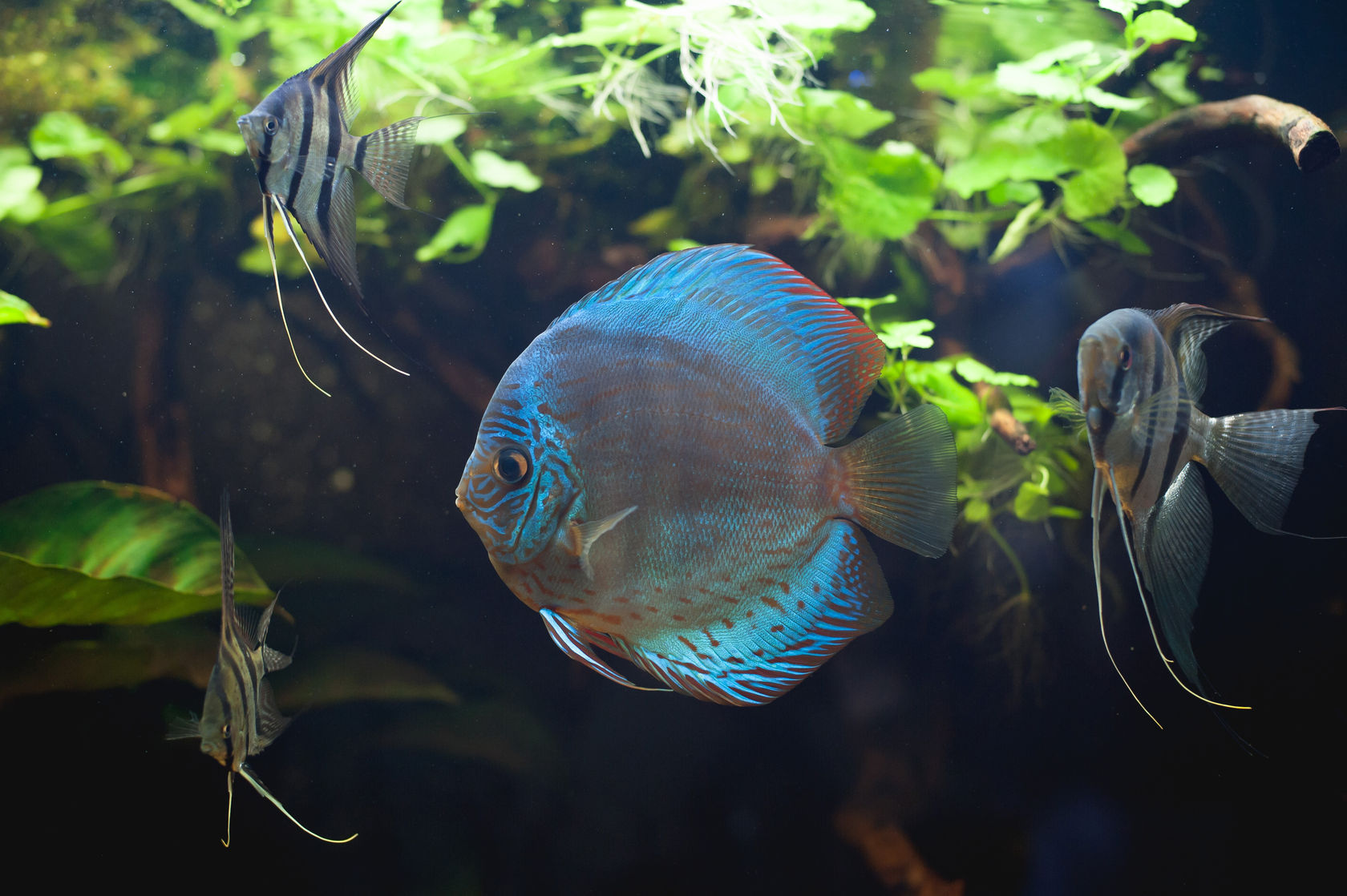 |
| Photo by Josephina Kolpachnikof on Unsplash |
Aquarium fish require a suitable habitat that mimics their natural environment to thrive. Having over 20 years of experience in the aquarium fish keeping hobby, I have learned that one of the best ways to provide a suitable habitat is by ensuring that their aquarium has stable temperatures. Most fish survive in an environment where temperatures range between 74°F and 80°F.
Using an aquarium heater for the size and dimensions of the aquarium, is the best way to ensure these stable temperatures. Here is the submersible heater that we recommend based on our many years of experience using different types of heaters.
hygger Variable Frequency Titanium Heater
For medium and larger sized aquariums, the hygger Variable Frequency Titanium Heater is the best overall heater for its price and performance. This heater has titanium heating elements that are contained inside a protective plastic casing. This allows for providing the best heating capabilities while protecting the inhabitants of the aquarium. Other titanium heaters I have used have experienced problems with the plastic case starting to melt. This heater has not had the same issue.
The built in thermostat of the hygger Variable Frequency Titanium Heater allows for continual measurement of water temperatures and the heater is programmed to shut off when the water reaches the temperature that the heater is set to. I have found that this heater does an excellent job at keeping the water temperature at what I set it to. It has a digital LED display that provides a quick and accurate reading of the water temperature. It also features a dual sensor mode and auto power off if exposed to air.
For aquariums that are 30 gallons or smaller, the hygger Variable Frequency Titanium Heater is more than what is needed. hyggar has other smaller heaters that will be better suited for smaller aquariums.
Over the years of keeping different types of aquarium fish in various sized tanks, we have learned to look for certain things when selecting a heater. Here are a few factors to consider when choosing the best heater for your aquarium.
The type of aquarium heater
The first step to choosing the right aquarium involves knowing the differences between the various heater types and determining which is best for your aquarium. Here are the most common aquarium heaters:
Inline aquarium heater: The inline aquarium heater is one of the most efficient heaters for an aquarium. You can attach this heater to the tank’s filter, which will ensure water heats as you pump in.Submersible heater: This heater requires a complete submerge into the aquarium. You need to mount it to the back of the aquarium vertically or horizontally.
Hang-on heater: This is the least efficient aquarium heater and is partially submersible. However, it will offer small tanks adequate heating. If you have a larger aquarium, use two or more hang-on heaters.
These different aquarium heaters can be made from titanium, plastic, or glass. A titanium aquarium heater has more power compared to plastic or glass heaters, making them best for aquariums of over 250 gallons.
On the other hand, the plastic heater is more durable as it will not crack or shatter like titanium heaters. The glass heater is the most affordable one.
The size of the aquarium heater
The water volume of your fish tank will impact the size of the aquarium heater you should get. The general rule requires five watts of heat per gallon of water. The 5 watts per 1 gallon ensures the aquarium water is 10° more than the room temperature.
It means that for a 10-gallon fish tank, you should provide a 50 watts heater. If you have a 20-gallon tank, the recommended heater is a 100-watt heater. For a 75-gallon tank, consider three 100 watts heaters. Also, use a secure lid to bar against evaporative cooling.
Your home's location is another factor that should impact the aquarium heater's size. If you live in a cold area of 65 °F, you must increase the water temperature by 15°. You can also consider getting two heaters. Furthermore, if you house the fish tank in a cooler section of your home, such as near a window or basement, adjust the heater and upgrade to the next highest watts.
The placement of the heater
As stated above, there are different kinds of aquarium heaters. The best you can consider for your aquarium is the submersible heater compared to the partially submersible one. The submersible heater will give you placement freedom and offer heat in the entire aquarium because of the water current.
If you opt for a submersible fish tank heater, place it next to the filter. On the other hand, if you choose a partially submersible aquarium heater, place an air stone under the heater to ensure that cool water draws near the heat source.
The features of the heater
A heater's features should also be essential to your buying decision. For instance, a smart aquarium heater will ensure steady and precise temperature control. Other features you can look into include the digital display, design, heater guard, and adjustable temperature feature.
Make sure to go for a high-quality heater, as the higher the quality, the longer it will last. Also, note that buying the wrong heater or a poor quality one can put your fish at risk. A low-quality heater risks overheating, cracking, shutting down, and breaking down. Therefore, check the features of your heater well. An exceptional heater will have a guard that protects your fish.
Your budget
Heaters are essential in providing a suitable environment for your fish to thrive. Therefore, do not go for cheap heaters with poor quality. Your primary goal should be to buy the best heater in the market.
Be sure to invest in a quality aquarium heater, no matter the cost. You can research to find the best fish tank heaters in the market within your budget requirements.
Bottom Line
Choosing a heater for your aquarium is not a straightforward process. It requires you to conduct research, as the research will ensure that you buy the best heater in the market and provide your fish with the best environment for survival.








